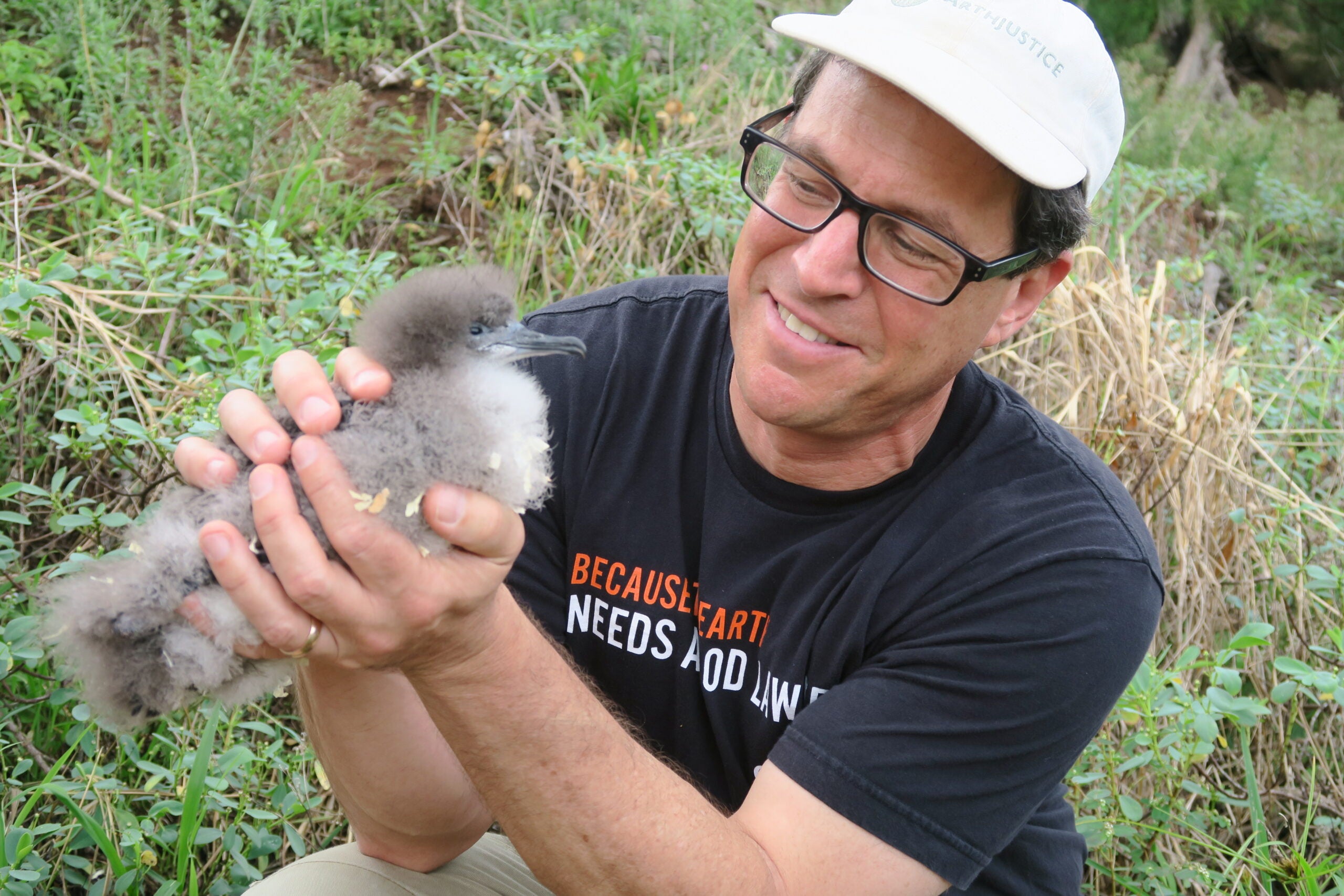Fixing Hawai'i’s Power Lines and Street Lights to Save Seabirds and Sea Turtles
Bad infrastructure in Hawaiʻi is putting wildlife at grave risk. The solution is actually quite simple.

This page was published 5 years ago. Find the latest on Earthjustice’s work.
Hawaiʻi has a problem that is killing our wildlife. Our communities’ infrastructure – the lights that brighten the streets, and the power lines strung along them – are decimating a large proportion of our wildlife. Nocturnal seabirds such as the Newell’s shearwater (‘a‘o) and Hawaiian petrel (‘ua‘u) are especially at risk.
As these seabirds leave their nests to fly out to sea under the cover of darkness, streetlights disorient them, causing them to fall exhausted to the ground or collide with structures. Power lines strung across their natural flight paths are nearly invisible drift nets in the night sky. Once on the ground, seabirds are vulnerable to car traffic and predation.
Because these seabirds evolved to launch into flight from cliff sides, they struggle and fail to launch back in the air from flat terrain. Some simply die of dehydration.
But after more than 10 years of planning, Kaua‘i is showing a better way forward for counties across the state with the new Kaua‘i Seabird Habitat Conservation Plan. Spurred on by legal action brought in 2010 by Earthjustice on behalf of American Bird Conservancy, Hui Ho‘omalu i Ka ‘Āina, Conservation Council for Hawai‘i, and the Center for Biological Diversity, the plan is geared to reduce light pollution and offset remaining impacts with projects like fencing nesting colonies.
Kaua‘i’s work is not done. Notably absent from the plan is the Kaua‘i Island Utility Cooperative, which is responsible for even more bird deaths than light pollution. After Hurricane ‘Iniki slammed into Kaua‘i in 1992, the utility quickly rebuilt its power lines across seabirds’ flight paths, above the treetops where seabirds cannot see them in the dark. The result is 10,000 bird strikes per year, with over a thousand of those lethal.
A responsible plan from KIUC would include lowering power lines below treetops where possible, installing diverters so birds can see lines, and simple reconfigurations of power line arrays so they function less as drift nets in the sky. These sorely needed upgrades have languished for years.
Time is running out for KIUC to address these issues and save our native seabirds. Both Newell’s shearwater and Hawaiian petrel populations on Kauaʻi are crashing, with the number of Newell’s shearwaters dropping by 94% in only twenty years and the Hawaiian petrel population declining by 78%.
In Maui County, officials recently decided to replace 4,800 streetlights with new LED fixtures, ignoring wildlife experts’ and community members’ warnings that streetlights with a high blue-light content harm seabirds and sea turtles. Maui County’s Department of Public Works launched the project without the necessary environmental review and has now been taken to court.
The solution all along? Quite simple. Switch to other LED bulbs that filter out blue light. The County would not have had to look far to find that solution: the Big Island already uses LED bulbs more protective of its wildlife.
Maui’s actions threaten other native species, including hawksbill and green sea turtles. Newly hatched turtles are drawn to the blue-light content of unfiltered LEDs, distracting them from reaching the protection of the ocean. One bright, unfiltered street light can wipe out hundreds of turtle hatchlings.
Facing the decline of entire species in Hawaiʻi is deeply unsettling. Who wants to imagine Hawaiʻi without the distinctive calls of the ‘a‘o and the ʻua‘u that gave these seabirds their names? Who wants the next generation growing up without honu or seabirds? And all because of light bulbs that are too blue and power lines strung too high. With commonsense planning, we can upgrade our infrastructure to ensure our wildlife are part of Hawai‘i for future generations.
This piece was originally published in the Honolulu Star Adviser on July 1, 2020.
Established in 1988, Earthjustice's Mid-Pacific Office, located in Honolulu, Hawaiʻi, works on a broad range of environmental and community health issues, including to ensure water is a public trust and to achieve a cleaner energy future.